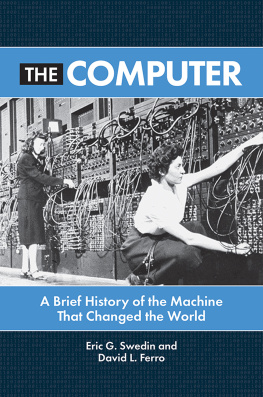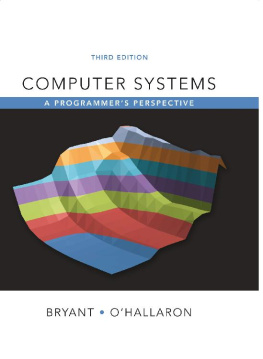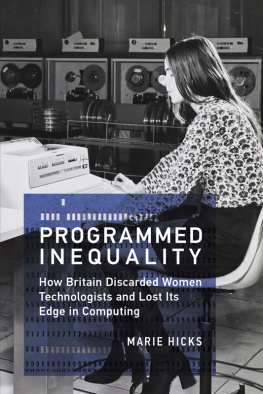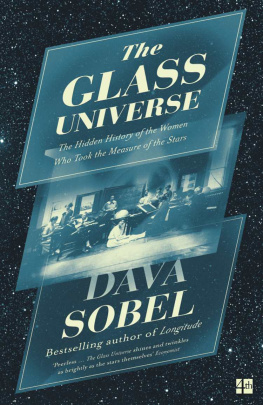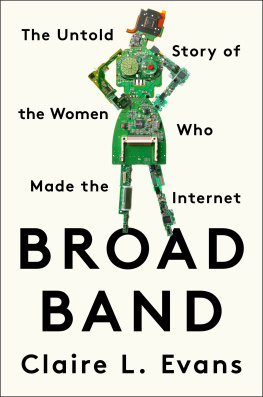
Copyright 2022 by First Byte Productions, LLC
Cover design by Sarahmay Wilkinson
Cover images: top: (left) courtesy of the Bartik family; (center) by Francis Miller/The LIFE Picture Collection/Getty images; (right) courtesy of the Hagley Museum and Library; bottom: (left) by CORBIS/Getty Images; (center and background code image) Special Collections Research Center, Temple University Libraries, Philadelphia, PA; (right) University Archives and Records Center, University of Pennsylvania
Cover copyright 2022 by Hachette Book Group, Inc.
Hachette Book Group supports the right to free expression and the value of copyright. The purpose of copyright is to encourage writers and artists to produce the creative works that enrich our culture.
The scanning, uploading, and distribution of this book without permission is a theft of the authors intellectual property. If you would like permission to use material from the book (other than for review purposes), please contact permissions@hbgusa.com. Thank you for your support of the authors rights.
Grand Central Publishing
Hachette Book Group
1290 Avenue of the Americas, New York, NY 10104
grandcentralpublishing.com
twitter.com/grandcentralpub
First Edition: July 2022
Grand Central Publishing is a division of Hachette Book Group, Inc. The Grand Central Publishing name and logo is a trademark of Hachette Book Group, Inc.
The publisher is not responsible for websites (or their content) that are not owned by the publisher.
The Hachette Speakers Bureau provides a wide range of authors for speaking events. To find out more, go to www.hachettespeakersbureau.com or call (866) 376-6591.
Library of Congress Cataloging-in-Publication Data
Names: Kleiman, Kathy, author.
Title: Proving ground : the untold story of the six women who programmed the worlds first modern computer / Kathy Kleiman.
Description: First edition. | New York : Grand Central Publishing/Hachette Book Group, 2022. | Includes bibliographical references and index.
Identifiers: LCCN 2022004309 | ISBN 9781538718285 (hardcover) | ISBN 9781538718278 (ebook)
Subjects: LCSH: Women computer programmersUnited StatesBiography. | Computer programmersUnited StatesBiography. | ENIAC (Computer)
Classification: LCC QA76.2.A2 K56 2022 | DDC 004.092/2 [B]dc23/eng/20220412
LC record available at https://lccn.loc.gov/2022004309
ISBN: 9781538718285 (hardcover), 9781538718278 (ebook)
E3-20220525-JV-NF-ORI
To Betty, Kay, Jean, and Marlyn for sharing your stories so generously,
To Sam and Robin for listening to me tell and retell them, and
To Mark for joining in the journey
Electronic Numerical Integrator and Computer Programmers (the ENIAC 6)
Kathleen McNulty/KayMath graduate of all-womens Chestnut Hill College in Philadelphia. She was recruited to the Armys Philadelphia Computing Section at the Moore School in 1942 and became supervisor of a team operating the differential analyzer from 1942 to 1945. In 1945, she was chosen to program ENIAC, and moved with ENIAC to Aberdeen Proving Ground (APG) after World War II to continue her programming work.
Frances Bilas/FranMath graduate of Chestnut Hill College and Kays best friend. She was recruited to the Armys Philadelphia Computing Section at the Moore School in 1942 and became the supervisor of a team operating the differential analyzer from 1942 to 1945. In 1945, she was chosen to program ENIAC, and moved with ENIAC to APG after WWII to continue her programming work.
Frances Elizabeth Snyder/BettyGraduate of University of Pennsylvania. She joined the Armys Philadelphia Computing Section at the Moore School in 1942. In 1945, she was chosen to program ENIAC, and moved with ENIAC after WWII to APG to continue her programming work. She became an early employee of Eckert-Mauchly Computer Corporation working with the first commercial computers and went on to a forty-year career at the cutting-edge of computing and programming.
Marlyn WescoffGraduate of Temple University. She joined an Army radar project at the Moore School in 1942 and became part of the Armys Philadelphia Computing Section in 1943. In 1945, she was chosen to program ENIACs ballistics trajectory program.
Ruth LichtermanUndergraduate studying math at Hunter College in New York City when she was recruited to the Armys Philadelphia Computing Section at the Moore School in 1943. In 1945, she was chosen to program ENIAC and moved with ENIAC after WWII to APG to continue her programming work. She then returned to the Moore School to work on other projects.
Jean JenningsMath graduate of Northwest Missouri State Teachers College in Maryville, Missouri. She moved to Philadelphia in 1945 to join the Armys Philadelphia Computing Section. In 1945, she was chosen to program ENIAC. After WWII when ENIAC moved to APG, she continued her work with ENIAC, helping to design and program its Converter Code and hiring and leading a programming team to deliver the Ballistic Research Laboratorys (BRL) first wind tunnel programs for ENIAC. She continued at Eckert-Mauchly Computer Corporation and had an active career in computing and computer publishing.
Moore School of Electrical Engineering, University of Pennsylvania
Dr. Harold PenderFirst dean of Moore School. He contracted with the BRL for Moore School to host the Armys Philadelphia Computing Section during WWII. Under his tenure, J. Presper Eckert and Dr. John Mauchly built ENIAC.
Dr. John Grist Brainerd/GristMoore School instructor, dean, and Director of Research. He was the liaison to BRL at APG for the Armys Philadelphia Computing Section and later the ENIAC project. He was close to Lieutenant Herman Goldstine.
Joe ChaplineBeginning in May 1942, he was a research associate at Moore School and a maintenance engineer on the differential analyzer. He was a champion of Johns computing ideas and connected Herman Goldstine with John Mauchly.
Dr. John MauchlyReceived his PhD in physics from Johns Hopkins University. He was a professor at Ursinus College when he left to answer the Armys call for men with electronics abilities during World War II. He was cofounder of Eckert-Mauchly Computer Corporation and co-inventor of the worlds first general-purpose, programmable, all-electronic computer, ENIAC, and its successors BINAC (Binary Automatic Computer) and UNIVAC (Universal Automatic Computer), the first modern commercial computers.
J. Presper Eckert Jr./PresElectrical engineering graduate of the Moore School. He was a lab instructor there when Mauchly first met him. He was cofounder of Eckert-Mauchly Computer Corporation and co-inventor of ENIAC, BINAC, and UNIVAC and was considered one of the finest electrical engineers of the twentieth century.
Dr. Irven TravisElectrical engineering professor at the Moore School who was called to active duty in 1941. He returned in 1946 and became Director of Research. He ended up clashing with John and Pres over patent rights.
Ballistic Research Laboratory, Aberdeen Proving Ground, Aberdeen, Maryland
Colonel (later Major General) Leslie E. SimonDirector of BRL during WWII. He created the Armys Philadelphia Computing Section at the Moore School during WWII with Captain Paul Gillon and worked with John Grist Brainerd and Herman Goldstine. He negotiated and approved the contract with the Moore School to build ENIAC and relocate it to BRL after its acceptance by the Army.


